
Adriano Banchieri was an Italian composer, music theorist, organist and poet of the late Renaissance and early Baroque eras. He founded the Accademia dei Floridi in Bologna.
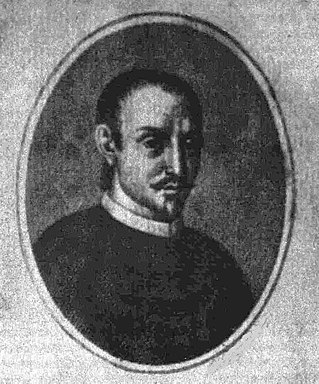
Pietro Carrera was an Italian chess player, historian, priest and author.

Rodrigo "Ruy" López de Segura was a Spanish chess player, author, and Catholic priest whose 1561 treatise Libro de la invención liberal y Arte del juego del Axedrez was one of the first books about modern chess in Europe. He made great contributions to chess opening theory, including in the King's Gambit and the Ruy López opening that bears his name. López was also the strongest player in Spain for about 20 years.

Marco Girolamo Vida or Marcus Hieronymus Vida was an Italian humanist, bishop and important poet in Christian Latin literature.

Gioachino Greco, surnamed Cusentino and more frequently il Calabrese, was an Italian chess player and writer. He recorded some of the earliest chess games known in their entirety. His games, which never indicated players, were quite possibly constructs, but served as examples of brilliant combinations.
Pomponio Nenna was a Neapolitan Italian composer of the Renaissance. He is mainly remembered for his madrigals, which were influenced by Gesualdo, and for his polychoral sacred motets, posthumously published as Sacrae Hebdomadae Responsoria in 1622.

Dom Guido Grandi, O.S.B. Cam. was an Italian monk, priest, philosopher, theologian, mathematician, and engineer.
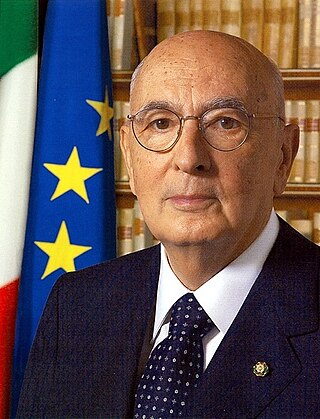
Giorgio Napolitano was an Italian politician who served as the 11th president of Italy from 2006 to 2015, the first to be re-elected to the office. In office for 8 years and 244 days, he was the longest-serving president, until the record was surpassed by Sergio Mattarella in 2023. He also was the longest-lived president in the history of the Italian Republic, which has been in existence since 1946. Although he was a prominent figure of the First Italian Republic, he did not take part in the Constituent Assembly of Italy that drafted the Italian constitution; he is considered one of the symbols of the Second Italian Republic, which came about after the Tangentopoli scandal of the 1990s. Due to his dominant position in Italian politics, some critics have sometimes referred to him as Re Giorgio.

Alessandro Salvio was a leading Italian chess player in the early 17th century. He started a chess academy in Naples, and wrote a book called Trattato dell'Inventione et Arte Liberale del Gioco Degli Scacchi, which was published in Naples in 1604. He also wrote Il Puttino published in 1634. According to JH Saratt's translation, Il Puttino was first published in 1604, and republished in 1634.
Giulio Cesare Polerio was an Italian chess theoretician and player.

Cataldo Vito Amodei was an Italian composer of the mid-Baroque period who spent his career in Naples. His cantatas were important predecessors to the active cantata production of 18th-century Naples, and he stands with the elder Francesco Provenzale and younger Alessandro Scarlatti as among the principal Italian cantata composers. Other surviving works include a book of motets dedicated to Leopold I, Holy Roman Emperor; a serenata; two pastorales; two psalms; and four oratorios, which were important contributions to their genre.

Julius Caesar Capaccio was a learned Italian humanist of the 17th century. A civic humanist, in 1602 he was appointed secretary of the city of Naples.
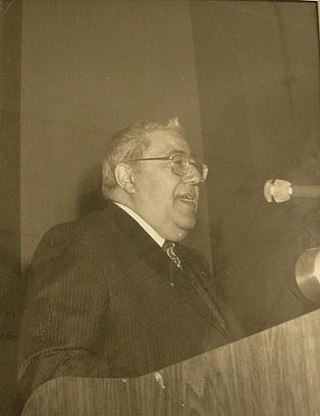
Enzo Giudici was an Italian academic who specialized in French Renaissance literature, particularly Louise Labé and Maurice Scève. Giudici was also a publicist often compared with fascism.
Giuseppe Michele Stratico was a Venetian composer and violinist of Greek descent.
Ghirlanda sacra scielta da diversi eccellentissimi compositori de varii motetti à voce sola is a compilation of 44 single-voice motets in the new style assembled by Leonardo Simonetti. Simonetti was a chorister in the Cappella Marciana, and placed his master Claudio Monteverdi at the head of the collection with four pieces, following it with other composers from the area of Venice and Veneto. A second printing followed in 1636.
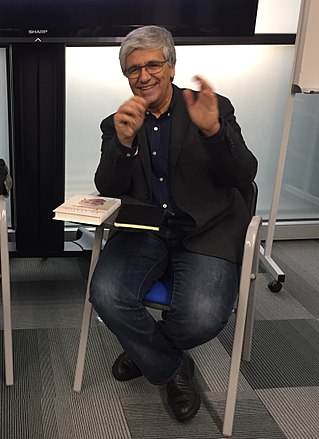
Andrea Tornielli is an Italian Catholic journalist and religious writer who serves as the editorial manager for the Vatican's Dicastery for Communication.
The 2020–21 season is Pallacanestro Trieste's 47th in existence and the club's 4th consecutive season in the top tier Italian basketball.
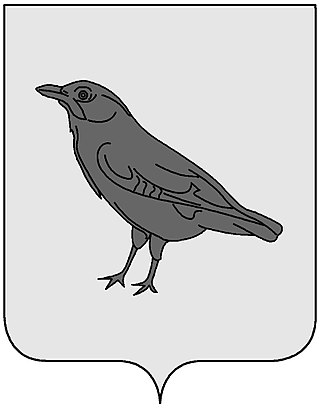
Trogia Gazzella was an Italian noblewoman, mistress of King Alfonso II of Naples and mother of two his illegitimate children, who both married one of illegitimate children of Pope Alexander VI Borgia by his mistress Vannozza Cattanei.
Tommaso Costo was an Italian Renaissance humanist and writer.













